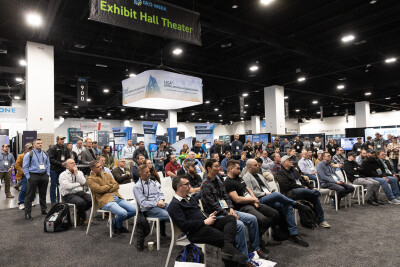You may have seen the news: Autodesk announced on Thursday its 2Q earnings results and Wall Street was not impressed. Thirty-four million shares changed hands on Friday, and the share price dropped from just under 36 to just over 31. What could be so bad?
Well, it depends on your perspective. The “bad news” still involved an increase in revenue, up four percent YoY to $569 million for the quarter. The company announced record deferred revenue of $752 million. The company still produced $107 million in cash flow.
It’s just that that cash flow is down $25 million over last year. And the results did not equal analysts’ predictions.
Not meeting analysts’ predictions makes your share price go down. Theoretically, you’re not worth what they thought you were worth. More than one firm downgraded the company from “buy” to “hold.”
Nor did Autodesk try to sugarcoat things:
“Our own execution challenges, combined with an uneven global economy, resulted in disappointing revenue results for the quarter,” said Carl Bass, Autodesk president and CEO. “Organizational changes we made within the company earlier this year slowed us down during the quarter. Despite our second quarter results, the changes better position Autodesk to meet the needs of our customers. We are focused on working through our internal challenges as rapidly as possible.”
When you put “disappointing” in your first quote in an earnings report, people pay attention. Those execution challenges are related to Autodesk’s decision to switch from an alignment based on geography to an alignment based on market segment. It’s not crazy to think that might lead to some growing pains.
Further, when you mention “restructuring,” as the press release does later, that’s another red flag (but, actually, can be a good thing from a stock price point of view; Wall Street likes layoffs because many two-bit analysts assume layoffs will lead to larger profits). Here are the details:
“This restructuring is squarely focused on our continued transformation and shift to more cloud and mobile computing,” continued Bass. “This action allows us to continue to invest in recruiting and hiring people who can bring Autodesk the skills and experience that are critical for achieving our mid and long-term goals. As part of the ongoing platform shift, it’s clear to us that design and engineering software will move to cloud and mobile platforms. Cloud and mobile has been a major investment area for Autodesk over the past couple of years and this restructuring will accelerate our progress as we intend to further invest in employees with expertise and skill sets essential to this transition. Additionally, this restructuring helps us reduce costs and streamline the organization as a continuation of the activities we began earlier this year.”
I didn’t catch the earnings conference call, but Randall Newton did, and I suggest you give his analysis a read (they’ve got some nice charts over there at Graphicspeak, too). Bass said the layoffs will be roughly 7 percent of the workforce, some 500 employees. But he also said the company would soon be hiring 250 or so, to target the move to the cloud the company is set upon and innovate in other ways. We’ll see if that happens. Newton also astutely notes “Autodesk was following the pack when it reorganized its sales and marketing around industry groups; PTC and Dassault Systems both went through similar internal reorganizations within the past 12-24 months, but neither has blamed the shifting for poor results since.”
Good point.
Further, when Newton asked for the number of users Autodesk usually provides, he was told that number would not be announced anymore. That’s a little bit shady.
It would seem that Autodesk really has to hit it big on this move to the cloud and its recent acquisitions. Add all of the above up, and there will be a loss of confidence in the company on Wall Street if Autodesk doesn’t have good news to report next quarter.
However, I think all of this could be okay for the data capture community. Maybe even good. We’re still talking about a company with $1.4 billion in cash on hand and zero debt. It’s not as though they’re teetering on the brink of insolvency here.
Further, Alice Labs was one of those acquisitions (a relatively small one, but still…), and that means there’s some impetus to capitalize on that buy and make a commitment to working well with collected 3D data part of the company’s focus on innovative new revenue streams. It wouldn’t surprise me at all if some of those 250 hires were in the reality capture department under Elmer Bol.
It may even be that arch enemies like Bentley seize on what might be perceived weakness and double down on their own investment in managing point clouds so as to go for Autodesk’s throat in the AEC community, where Autodesk saw some of its weakest results in the last quarter.
That might not be good for Autodesk, but it would be good for the data capture community.
Of course, it may also be that reality capture isn’t really on Autodesk’s big-picture radar, representing, as it does, a likely very small part of what its users are doing and demanding from the company’s software. You might even say now is the time to make some noise to your Autodesk sales guy – make your voices heard and maybe the company will see an opportunity right when it’s looking for one.





